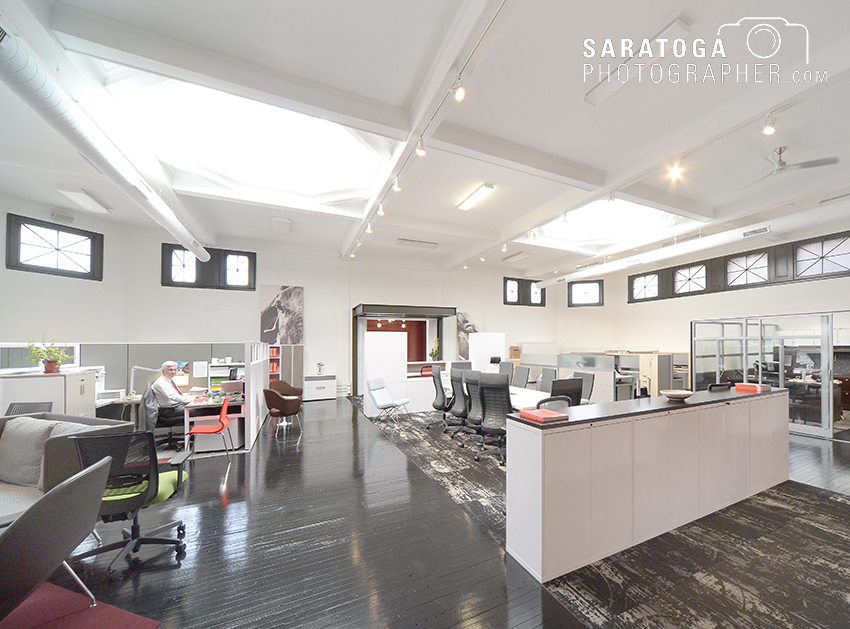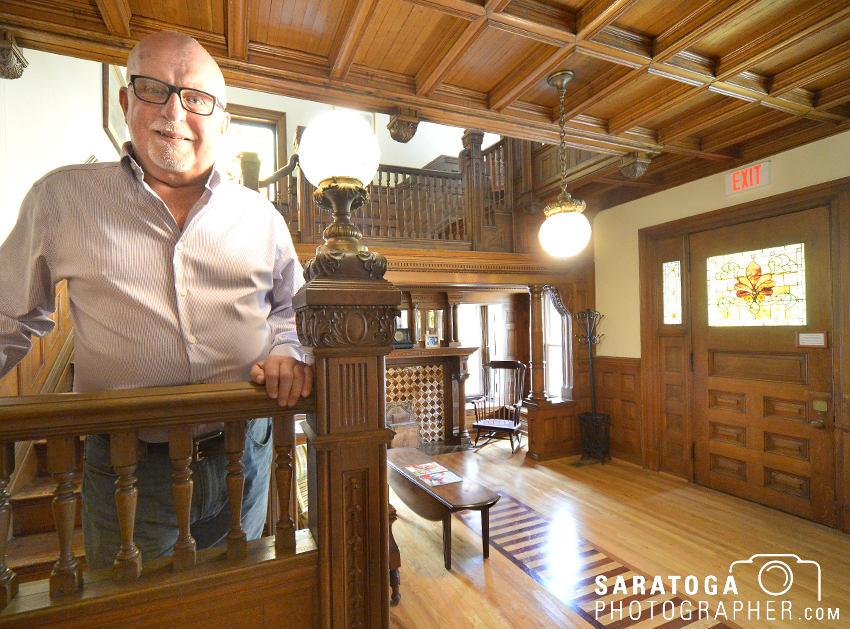
©2017 Saratoga Photographer.com
By Maureen Werther
In a region where new office buildings, apartments, condos and mixed-use structures are rapidly taking over the landscape, there are still residents and business people committed to restoring and stewarding the buildings that are part of the rich culture of the region.
In 1904 a stately brick building was erected at 153 Regent St., just a few blocks east of Broadway, to house the YWCA. The building was later purchased by Skidmore College and became part of its downtown campus, serving as a student union and a gymnasium.
It remained part of the campus until Skidmore migrated north, leaving the Regent Street building to sit idle, gradually falling into disrepair. Sometime in the early to mid-1970s, the city of Saratoga approached a local businessman and asked him if he would buy the property and refurbish it. He agreed, provided the city would allow unrestricted use of the building. He also required that those terms would be transferable to successive owners.
When Dorothy Rogers-Bullis and her husband, Dan Bullis, bought the building in 2013, the building had changed ownership multiple times. The couple, who own drb Business Interiors—a commercial design and furniture business—thought it would be a good place to showcase their office designs.
They immediately began the renovation process, “and we haven’t stopped,” said Rogers-Bullis. The first job they tackled was the roof.
“Water poured into the building every time it rained,” she said. Walls, flooring all had to be ripped out and re-constructed. The entire plumbing, electrical and HVAC systems had to be replaced. The couple acted as general contractors and designed the entire building themselves.
“That’s what drb Business Interiors does. We know how to design and build business spaces,” said Rogers-Bullis.

The space that was once locker rooms and showers now houses Saratoga Co-Works and Bloom Exercise Studio on the lower level. The main level contains the offices of drb Business Interiors and Allegory Studio. The upper level has two completely renovated apartments.
For Dan and Dorothy, the arduous work has been worth the effort. They have created a beautiful professional business work space for small businesses to grow and flourish, as well as helping to restore the beauty and integrity of the surrounding neighborhood.
Rory O’Connor is another individual who takes pride in his stewardship of 199 Milton Ave. in Ballston Spa. He is the owner of Saratoga Real Property and has been in the real estate business for 30 years. During that time, he has bought and sold literally hundreds of residential and commercial properties. But when he entered 199 Milton Ave. in 2006, he was struck by its beauty and potential—both of which seemed to have been ignored or gone unnoticed by others in the community— which was probably easy to do.
In Ballston Spa, the expansive Victorian home handled by O’Connor had been re-sided with white aluminum siding that had not aged well, and the second floor looked like it was totally devoid of windows. There was orange shag carpeting in some of the rooms, and other rooms had plywood on the floors to cover areas that had been damaged in a fire.
“It was the ugliest house in Ballston Spa,” he said. But O’Connor recognized the bones of the building, along with the detailed and precisioned woodwork throughout, were beneficial. Most of the original lighting fixtures were still hanging from the ceilings and the stained glass in the windows, as an imposing front door, were enough to make him see the potential.
“I had a dream of re-purposing it and creating something of value for the village, as well as for myself and my business,” he said. “I felt the building deserved it.”
The three-story structure was built in 1890 by a wealthy attorney named Jesse L’Amourleaux. While waiting for the mansion to be completed, L’Amourleaux lived next door in a home that is now the rectory of St. Mary’s Catholic Church. On the other side of 199 Milton was the building L’Amourleaux used as his law library.
When the home was complete, it was a massive three-story structure. An old photograph of the home shows a cupola on the third floor and a large veranda. Unfortunately, the third floor was destroyed in a fire and O’Connor could not justify the costs of completely rebuilding it.
Upon L’Amourleaux’s death, the home was inherited by the local Presbyterian church, who used to house retired ministers until around 1950. It was then sold to the Franklin Order of the Masonic Temple.
“When we began remodeling, the first thing we did was tear off the aluminum siding,” said O’Connor. What they found were openings for windows on the second floor. O’Connor replaced 42 windows.
The entire second floor had been converted into a cavernous room, roughly 120 x 50 feet, which had heavy burgundy drapes, matching burgundy velvet theater chairs and three altars where Masonic rituals were performed.
O’Connor was fortunate to have help from the Ballston Spa historian at the time, as well as help from the late Irena Wooten who was related to L’Amourleaux and who gave O’Connor a trove of pictures, architectural drawings and other information about the home.
O’Connor acted as general contractor and hired carpenters, who worked to duplicate as closely as possible what the home looked like in the early 1900s. The project took one year to complete.
The framing around the windows have been restored with Victorian decorative trim and all the original lighting fixtures have been converted to electric. The wooden staircases and adjoining trim are the original quarter-sawn tiger oak and the fireplaces and stained glass have all been carefully maintained and restored where necessary.
Today, in addition to serving as home to O’Connor, the building has 11 professional suites of varying sizes. There is a shared conference space and a large parking lot in the rear, both of which are included in the rent – as are the utilities. O’Connor noted that there is currently office space available. However, it is a one of a kind property and he does not expect the spaces to be vacant for long.
